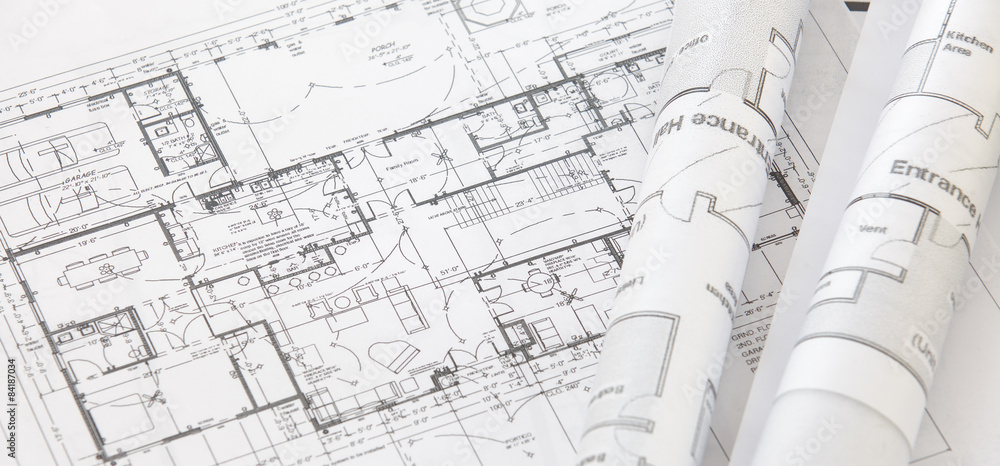In today’s rapidly evolving technological landscape, advancements in virtual walkthroughs are revolutionizing the way we approach fire safety and mechanical and electrical (M&E) systems in buildings.
By integrating lighting control and tagging features into virtual walkthroughs, professionals in architecture, engineering, and construction (AEC) industries are gaining invaluable tools to enhance safety protocols and streamline M&E operations.
### Leveraging Lighting Control for Enhanced Safety Lighting control systems play a crucial role in ensuring fire safety within buildings. Proper illumination not only aids in evacuation procedures during emergencies but also assists firefighters in navigating through structures in low-visibility conditions. Integrating lighting control functionalities into virtual walkthrough platforms allows stakeholders to simulate various lighting scenarios and assess their impact on fire safety measures. By adjusting lighting levels and configurations in virtual environments, architects and building designers can identify potential safety hazards such as obscured exit routes, inadequate emergency signage visibility, or areas prone to shadowing that may impede evacuation efforts. Additionally, real-time visualization of emergency lighting systems enables proactive troubleshooting and optimization to ensure compliance with safety regulations and standards.
### Optimizing Mechanical and Electrical Systems with Tagging The complexity of M&E systems in modern buildings demands efficient management and maintenance practices. Virtual walkthroughs equipped with tagging capabilities offer an intuitive solution for organizing and accessing crucial information related to equipment, components, and infrastructure. By tagging M&E assets within virtual models, facility managers, maintenance technicians, and building operators can easily retrieve relevant data such as maintenance schedules, equipment specifications, operational manuals, and safety procedures. This streamlined access to information facilitates proactive maintenance planning, troubleshooting, and decision-making, ultimately enhancing system reliability and minimizing downtime. Furthermore, the integration of augmented reality (AR) technology with tagging features empowers onsite personnel to overlay digital annotations onto physical equipment, enabling real-time data visualization and instructional guidance for maintenance tasks. This immersive approach fosters knowledge transfer and skills development while ensuring adherence to proper safety protocols and procedures.
### The Benefits of Tagging in Virtual Walkthroughs
1. **Enhanced Collaboration**: Tagging functionality promotes seamless communication and collaboration among multidisciplinary teams by providing a centralized platform for sharing insights, observations, and action items related to fire safety and M&E systems.
2. **Efficient Training and Education **: Virtual walkthroughs with tagging capabilities serve as valuable educational tools for training personnel on fire safety protocols, equipment operation, and maintenance procedures, fostering a culture of safety awareness and competency development.
3. **Data-Driven Decision Making**: Access to tagged information within virtual environments enables data-driven decision-making processes, empowering stakeholders to prioritize resources, allocate budgets effectively, and implement targeted improvements to enhance overall safety and operational efficiency.
4. **Regulatory Compliance**: By documenting compliance-related information within virtual models through tagging, organizations can demonstrate adherence to regulatory requirements and standards, mitigating potential liabilities and ensuring occupant safety.
### Conclusion Incorporating lighting control and tagging functionalities into virtual walkthroughs represents a paradigm shift in how we approach fire safety and M&E management in building environments. By harnessing the power of digital visualization and data organization, stakeholders can proactively identify risks, optimize system performance, and foster a culture of safety excellence. As technology continues to evolve, embracing innovative solutions will be paramount in creating safer, more resilient built environments for generations to come.
In today’s rapidly evolving technological landscape, advancements in virtual walkthroughs are revolutionizing the way we approach fire safety and mechanical and electrical (M&E) systems in buildings, by enhancing fire safety with lighting control in virtual walkthroughs
By integrating lighting control and tagging features into virtual walkthroughs, professionals in architecture, engineering, and construction (AEC) industries are gaining invaluable tools to enhance safety protocols and streamline M&E operations.
### Leveraging Lighting Control for Enhanced Safety Lighting control systems play a crucial role in ensuring fire safety within buildings. Proper illumination not only aids in evacuation procedures during emergencies but also assists firefighters in navigating through structures in low-visibility conditions. Integrating lighting control functionalities into virtual walkthrough platforms allows stakeholders to simulate various lighting scenarios and assess their impact on fire safety measures. By adjusting lighting levels and configurations in virtual environments, architects and building designers can identify potential safety hazards such as obscured exit routes, inadequate emergency signage visibility, or areas prone to shadowing that may impede evacuation efforts. Additionally, real-time visualization of emergency lighting systems enables proactive troubleshooting and optimization to ensure compliance with safety regulations and standards.
### Optimizing Mechanical and Electrical Systems with Tagging The complexity of M&E systems in modern buildings demands efficient management and maintenance practices. Virtual walkthroughs equipped with tagging capabilities offer an intuitive solution for organizing and accessing crucial information related to equipment, components, and infrastructure. By tagging M&E assets within virtual models, facility managers, maintenance technicians, and building operators can easily retrieve relevant data such as maintenance schedules, equipment specifications, operational manuals, and safety procedures. This streamlined access to information facilitates proactive maintenance planning, troubleshooting, and decision-making, ultimately enhancing system reliability and minimizing downtime. Furthermore, the integration of augmented reality (AR) technology with tagging features empowers onsite personnel to overlay digital annotations onto physical equipment, enabling real-time data visualization and instructional guidance for maintenance tasks. This immersive approach fosters knowledge transfer and skills development while ensuring adherence to proper safety protocols and procedures.
### The Benefits of Tagging in Virtual Walkthroughs
1. **Enhanced Collaboration**: Tagging functionality promotes seamless communication and collaboration among multidisciplinary teams by providing a centralized platform for sharing insights, observations, and action items related to fire safety and M&E systems.
2. **Efficient Training and Education **: Virtual walkthroughs with tagging capabilities serve as valuable educational tools for training personnel on fire safety protocols, equipment operation, and maintenance procedures, fostering a culture of safety awareness and competency development.
3. **Data-Driven Decision Making**: Access to tagged information within virtual environments enables data-driven decision-making processes, empowering stakeholders to prioritize resources, allocate budgets effectively, and implement targeted improvements to enhance overall safety and operational efficiency.
4. **Regulatory Compliance**: By documenting compliance-related information within virtual models through tagging, organizations can demonstrate adherence to regulatory requirements and standards, mitigating potential liabilities and ensuring occupant safety.
### Conclusion Incorporating lighting control and tagging functionalities into virtual walkthroughs represents a paradigm shift in how we approach fire safety and M&E management in building environments. By harnessing the power of digital visualization and data organization, stakeholders can proactively identify risks, optimize system performance, and foster a culture of safety excellence. As technology continues to evolve, embracing innovative solutions will be paramount in creating safer, more resilient built environments for generations to come.
In today’s rapidly evolving technological landscape, advancements in virtual walkthroughs are revolutionizing the way we approach fire safety and mechanical and electrical (M&E) systems in buildings.
By integrating lighting control and tagging features into virtual walkthroughs, professionals in architecture, engineering, and construction (AEC) industries are gaining invaluable tools to enhance safety protocols and streamline M&E operations.
### Leveraging Lighting Control for Enhanced Safety Lighting control systems play a crucial role in ensuring fire safety within buildings. Proper illumination not only aids in evacuation procedures during emergencies but also assists firefighters in navigating through structures in low-visibility conditions. Integrating lighting control functionalities into virtual walkthrough platforms allows stakeholders to simulate various lighting scenarios and assess their impact on fire safety measures. By adjusting lighting levels and configurations in virtual environments, architects and building designers can identify potential safety hazards such as obscured exit routes, inadequate emergency signage visibility, or areas prone to shadowing that may impede evacuation efforts. Additionally, real-time visualization of emergency lighting systems enables proactive troubleshooting and optimization to ensure compliance with safety regulations and standards.
### Optimizing Mechanical and Electrical Systems with Tagging The complexity of M&E systems in modern buildings demands efficient management and maintenance practices. Virtual walkthroughs equipped with tagging capabilities offer an intuitive solution for organizing and accessing crucial information related to equipment, components, and infrastructure. By tagging M&E assets within virtual models, facility managers, maintenance technicians, and building operators can easily retrieve relevant data such as maintenance schedules, equipment specifications, operational manuals, and safety procedures. This streamlined access to information facilitates proactive maintenance planning, troubleshooting, and decision-making, ultimately enhancing system reliability and minimizing downtime. Furthermore, the integration of augmented reality (AR) technology with tagging features empowers onsite personnel to overlay digital annotations onto physical equipment, enabling real-time data visualization and instructional guidance for maintenance tasks. This immersive approach fosters knowledge transfer and skills development while ensuring adherence to proper safety protocols and procedures.
### The Benefits of Tagging in Virtual Walkthroughs
1. **Enhanced Collaboration**: Tagging functionality promotes seamless communication and collaboration among multidisciplinary teams by providing a centralized platform for sharing insights, observations, and action items related to fire safety and M&E systems.
2. **Efficient Training and Education **: Virtual walkthroughs with tagging capabilities serve as valuable educational tools for training personnel on fire safety protocols, equipment operation, and maintenance procedures, fostering a culture of safety awareness and competency development.
3. **Data-Driven Decision Making**: Access to tagged information within virtual environments enables data-driven decision-making processes, empowering stakeholders to prioritize resources, allocate budgets effectively, and implement targeted improvements to enhance overall safety and operational efficiency.
4. **Regulatory Compliance**: By documenting compliance-related information within virtual models through tagging, organizations can demonstrate adherence to regulatory requirements and standards, mitigating potential liabilities and ensuring occupant safety.
### Conclusion Incorporating lighting control and tagging functionalities into virtual walkthroughs represents a paradigm shift in how we approach fire safety and M&E management in building environments. By harnessing the power of digital visualization and data organization, stakeholders can proactively identify risks, optimize system performance, and foster a culture of safety excellence. As technology continues to evolve, embracing innovative solutions will be paramount in creating safer, more resilient built environments for generations to come.


